Understanding Length Measurement - Definition, Examples, Quiz, FAQ, Trivia
Learn about length with easy explanations, examples, and practice activities
What is Length?
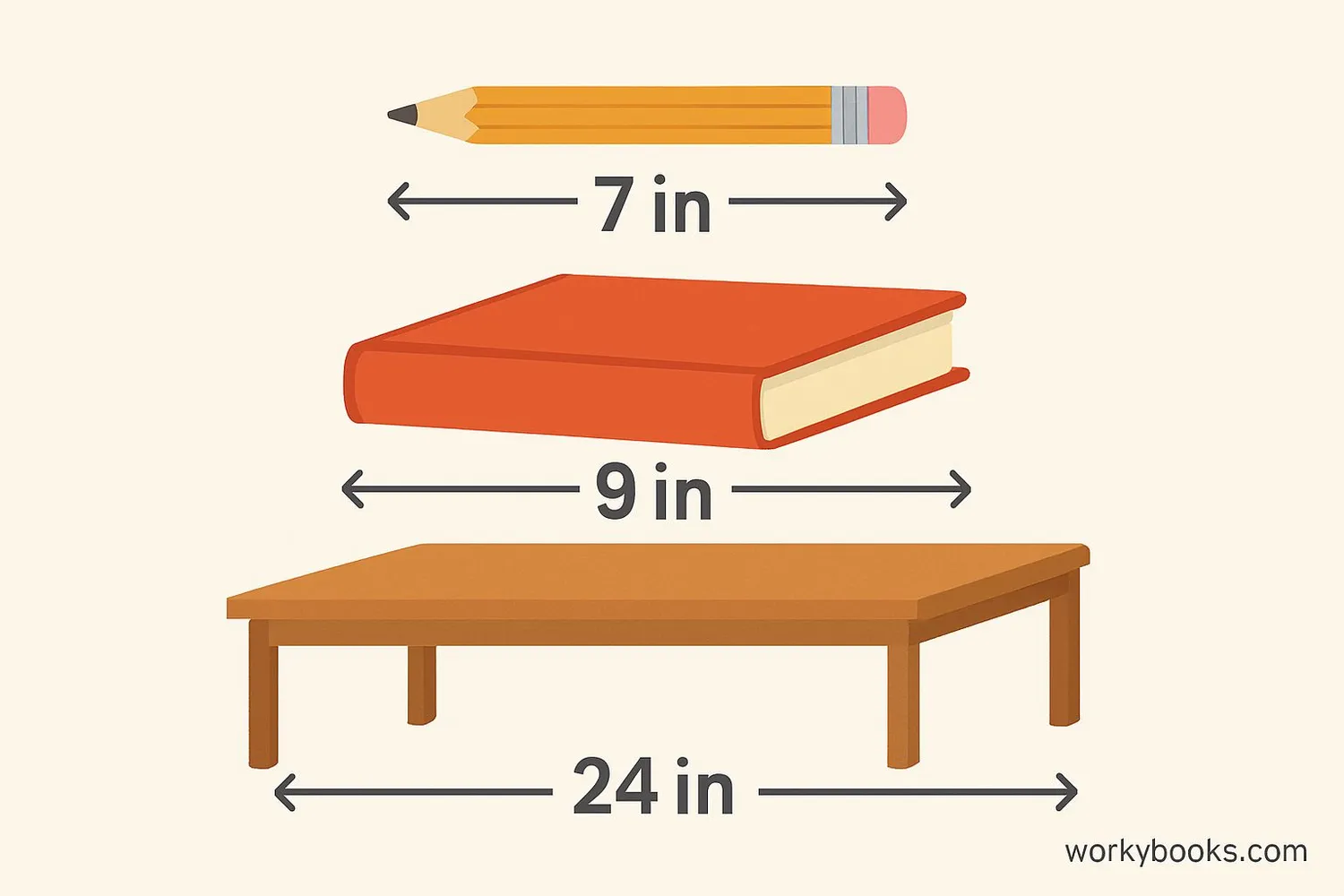
Length is how long something is from one end to the other. It tells us the distance between two points. We measure length to find out how long, tall, or wide something is.
We measure length using tools like rulers, tape measures, and meter sticks. Length helps us understand the size of objects and compare them to each other.
Length is one of the most important measurements we use every day. We measure length when we find out how tall we are, how long our desk is, or how far it is to the playground.
Key Concept
Length measures how long something is from one end to the other. It's one of the fundamental measurements in mathematics and science.
Units of Length
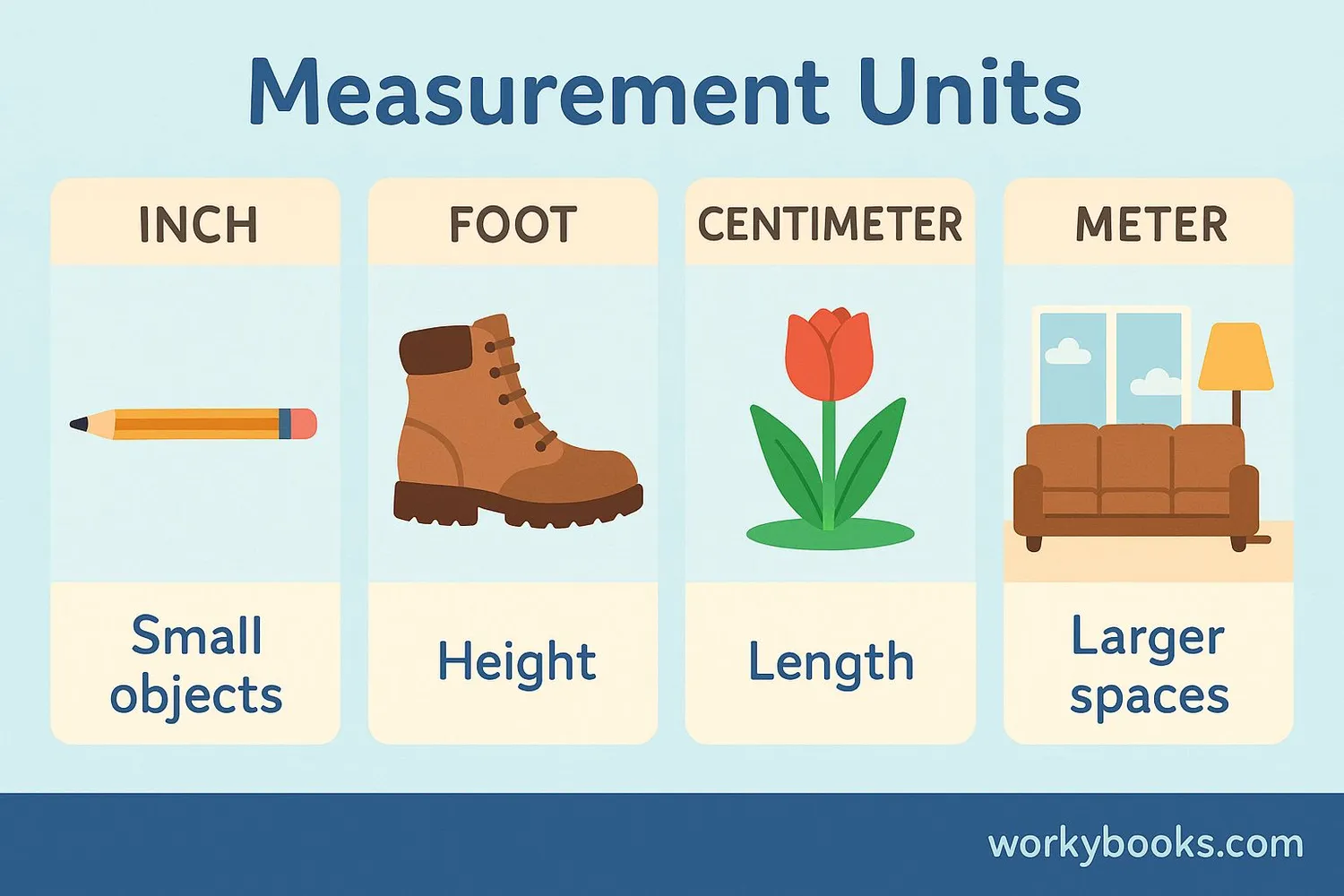
We use different units to measure length depending on what we're measuring and where we are in the world. The two main systems are:
Metric System: Used by most countries around the world. Includes millimeters, centimeters, meters, and kilometers.
Imperial System: Used mainly in the United States. Includes inches, feet, yards, and miles.
Smaller units help us measure small objects precisely, while larger units help us measure long distances more easily.
Common Length Units
| Unit | System | Used For |
|---|---|---|
| Millimeter (mm) | Metric | Very small objects (pencil lead) |
| Centimeter (cm) | Metric | Small objects (erasers, paper clips) |
| Meter (m) | Metric | Medium objects (desks, rooms) |
| Kilometer (km) | Metric | Long distances (between cities) |
| Inch (in) | Imperial | Small objects (screws, nails) |
| Foot (ft) | Imperial | Medium objects (people, furniture) |
| Yard (yd) | Imperial | Medium distances (football fields) |
| Mile (mi) | Imperial | Long distances (between towns) |
Remember
Choosing the right unit helps us communicate measurements clearly. We wouldn't measure a pencil in miles or a road trip in inches!
Measuring Length
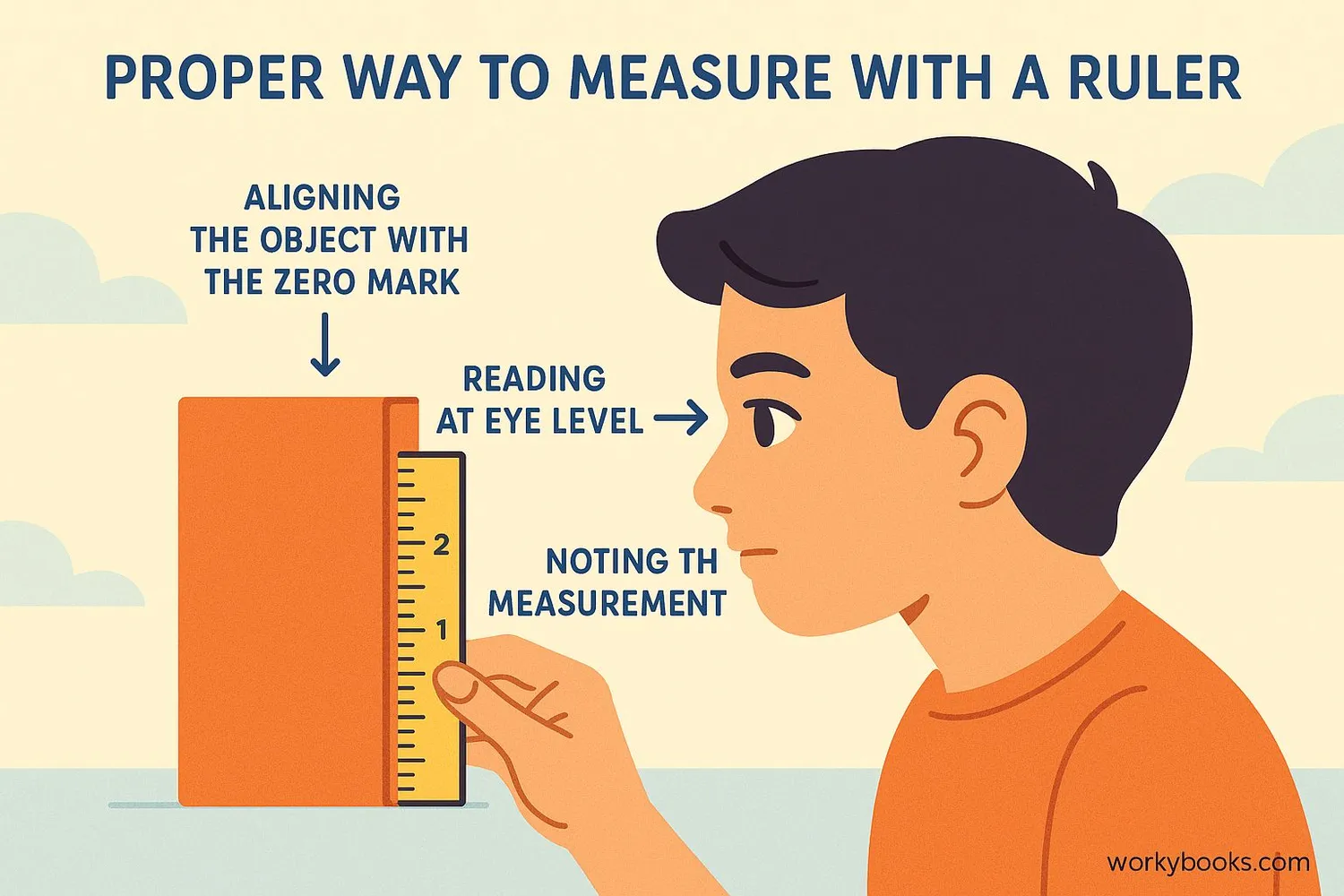
Measuring length accurately is an important skill. Here's how to do it properly:
1. Choose the right tool for what you're measuring (ruler for small objects, tape measure for longer ones).
2. Place the starting point of your tool at one end of the object.
3. Make sure the tool is straight and not bent or curved.
4. Read the measurement at the other end of the object.
5. Note the unit you're using (cm, inches, etc.).
When using a ruler, always line up the object with the zero mark, not the edge of the ruler. Some rulers have a small space before the zero mark, which can lead to incorrect measurements if you don't pay attention.
Measurement Tip
When measuring, always estimate to the nearest unit. If something is between two marks, choose the closer one or note that it's about halfway between.
Length Conversion
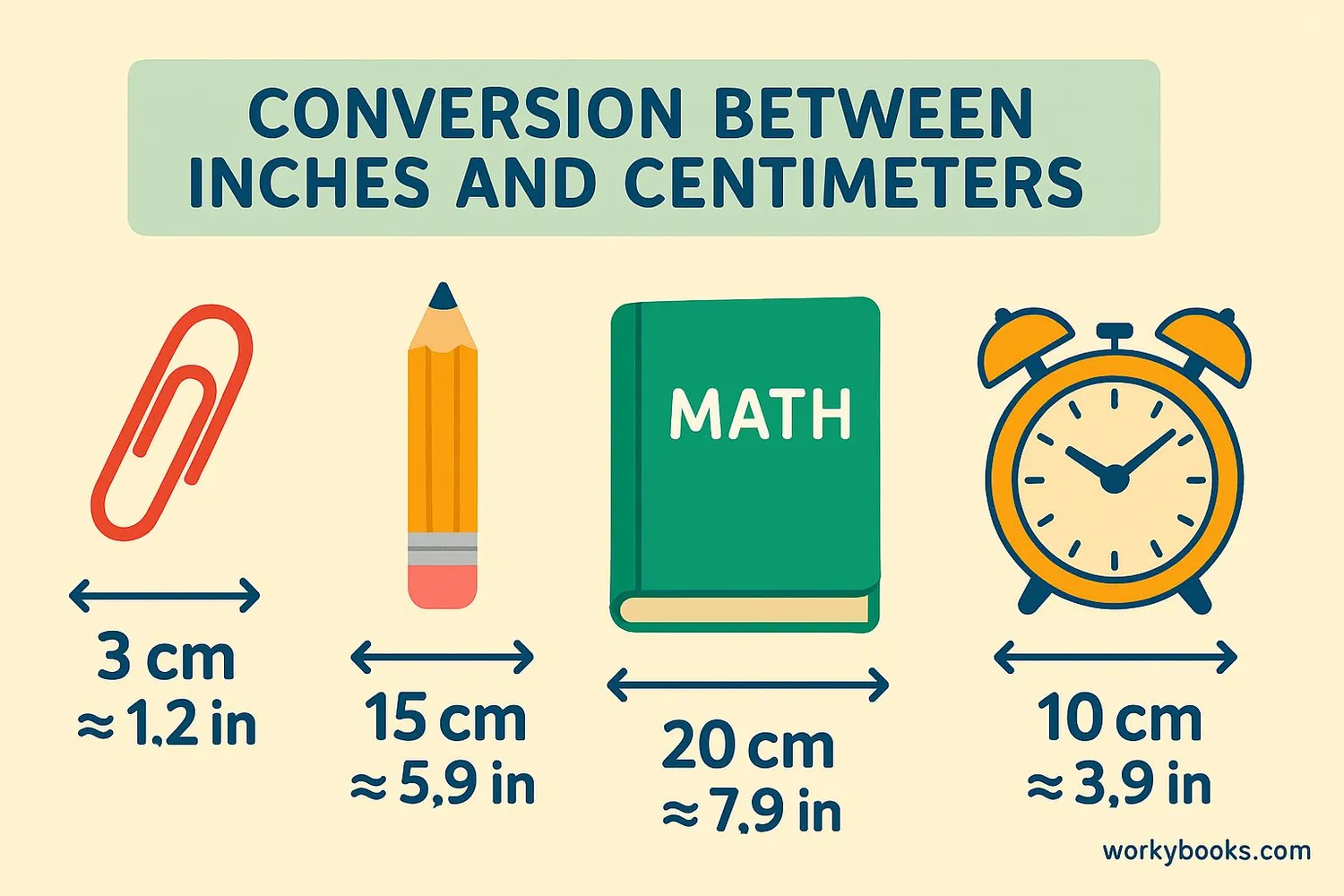
Sometimes we need to convert measurements from one unit to another. This is especially important when working with different measurement systems.
Here are some key conversion facts to remember:
Within the Metric System:
1 centimeter = 10 millimeters
1 meter = 100 centimeters
1 kilometer = 1000 meters
Within the Imperial System:
1 foot = 12 inches
1 yard = 3 feet
1 mile = 5280 feet
Between Systems:
1 inch = 2.54 centimeters
1 foot = 30.48 centimeters
1 meter ≈ 3.28 feet
Common Length Conversions
| From | To | Multiply By |
|---|---|---|
| Inches | Centimeters | 2.54 |
| Feet | Centimeters | 30.48 |
| Yards | Meters | 0.914 |
| Miles | Kilometers | 1.609 |
| Centimeters | Inches | 0.394 |
| Meters | Feet | 3.281 |
| Kilometers | Miles | 0.621 |
Conversion Tip
When converting between systems, remember that 1 inch is about 2.5 centimeters, and 1 foot is about 30 centimeters. These approximations can help you estimate conversions quickly.
Metric Units of Length
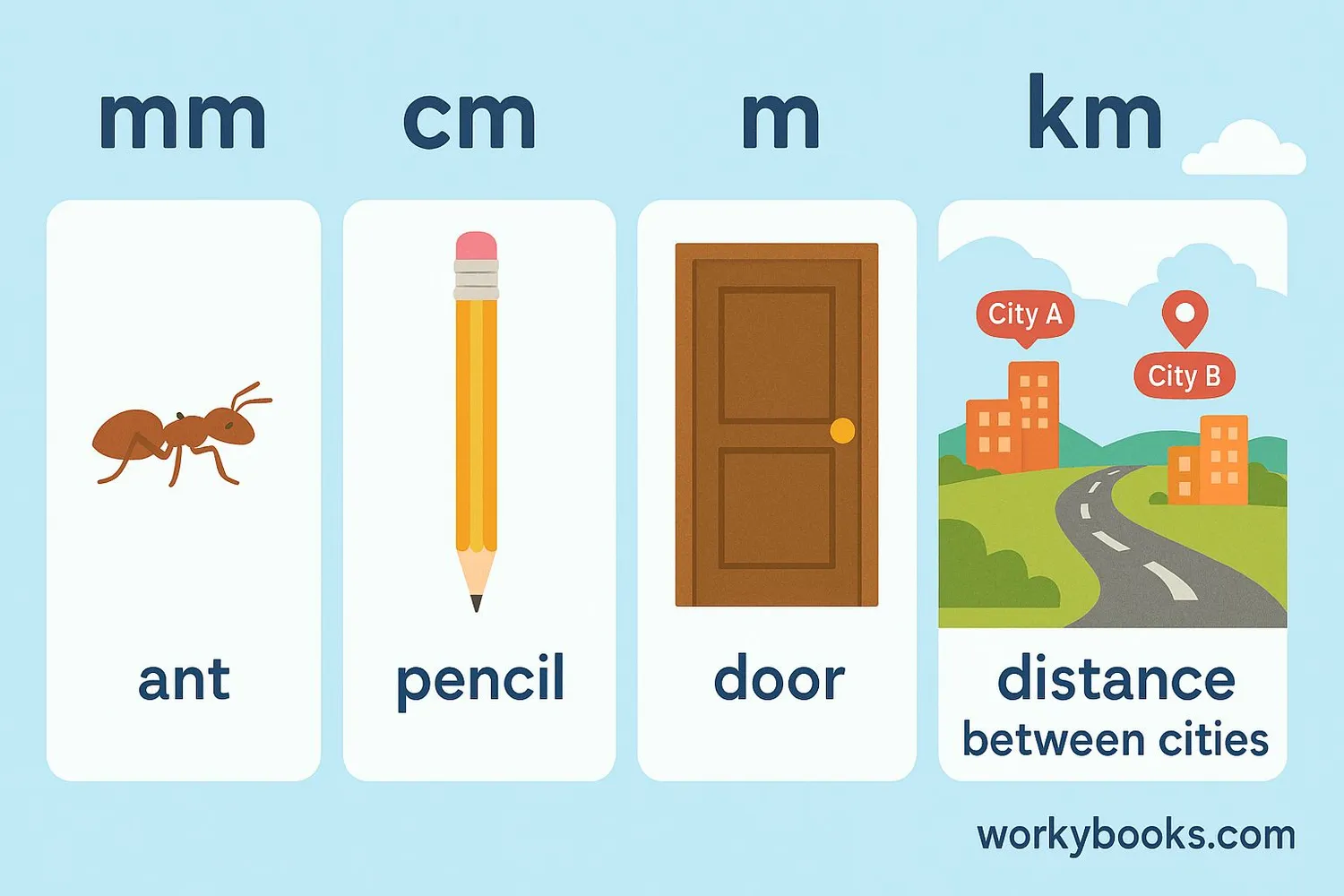
The metric system is a decimal-based system of measurement used by most countries around the world. It's based on the meter, which was originally defined as one ten-millionth of the distance from the equator to the North Pole.
The metric system is easy to use because it's based on powers of 10. This means you can convert between units by simply moving the decimal point.
Here are the main metric units of length from smallest to largest:
Millimeter (mm): The smallest common metric unit. There are 10 millimeters in 1 centimeter.
Centimeter (cm): Useful for measuring everyday objects. There are 100 centimeters in 1 meter.
Meter (m): The basic unit of length in the metric system. Used for measuring rooms, furniture, and people's height.
Kilometer (km): Used for longer distances. There are 1000 meters in 1 kilometer.
Metric Conversion
To convert between metric units, move the decimal point to the right (for smaller units) or left (for larger units).
Length Measurement Quiz
Test your knowledge about length measurement with this 5-question quiz. Choose the correct answer for each question.
Frequently Asked Questions
Here are answers to common questions about length measurement:
Measurement Trivia
Discover interesting facts about measurement systems:
Ancient Measurements
Ancient Egyptians used body parts for measurement. The cubit was the length from the elbow to the tip of the middle finger (about 18 inches). The inch was originally based on the width of a man's thumb.
The Meter's Origin
The meter was originally defined in 1793 as one ten-millionth of the distance from the equator to the North Pole. Today, it's defined as the distance light travels in a vacuum in 1/299,792,458 of a second.
Space Measurements
Astronomers use special units for measuring vast distances in space. A light-year is the distance light travels in one year—about 9.46 trillion kilometers! An astronomical unit (AU) is the distance from Earth to the Sun.
Longest and Shortest
The smallest unit of length is the Planck length (about 1.6 × 10^-35 meters). The observable universe is about 93 billion light-years in diameter. That's a difference of 61 orders of magnitude!


